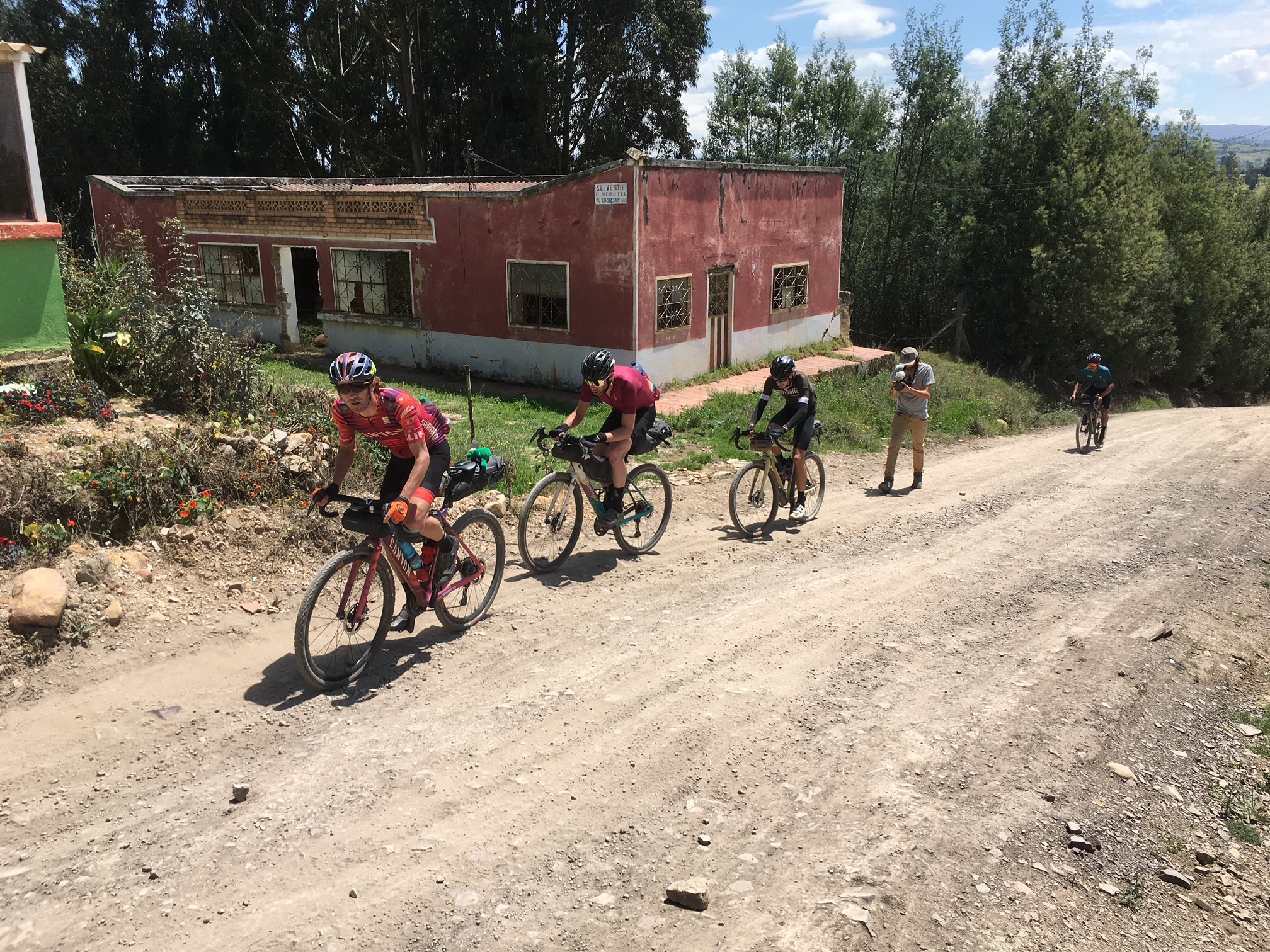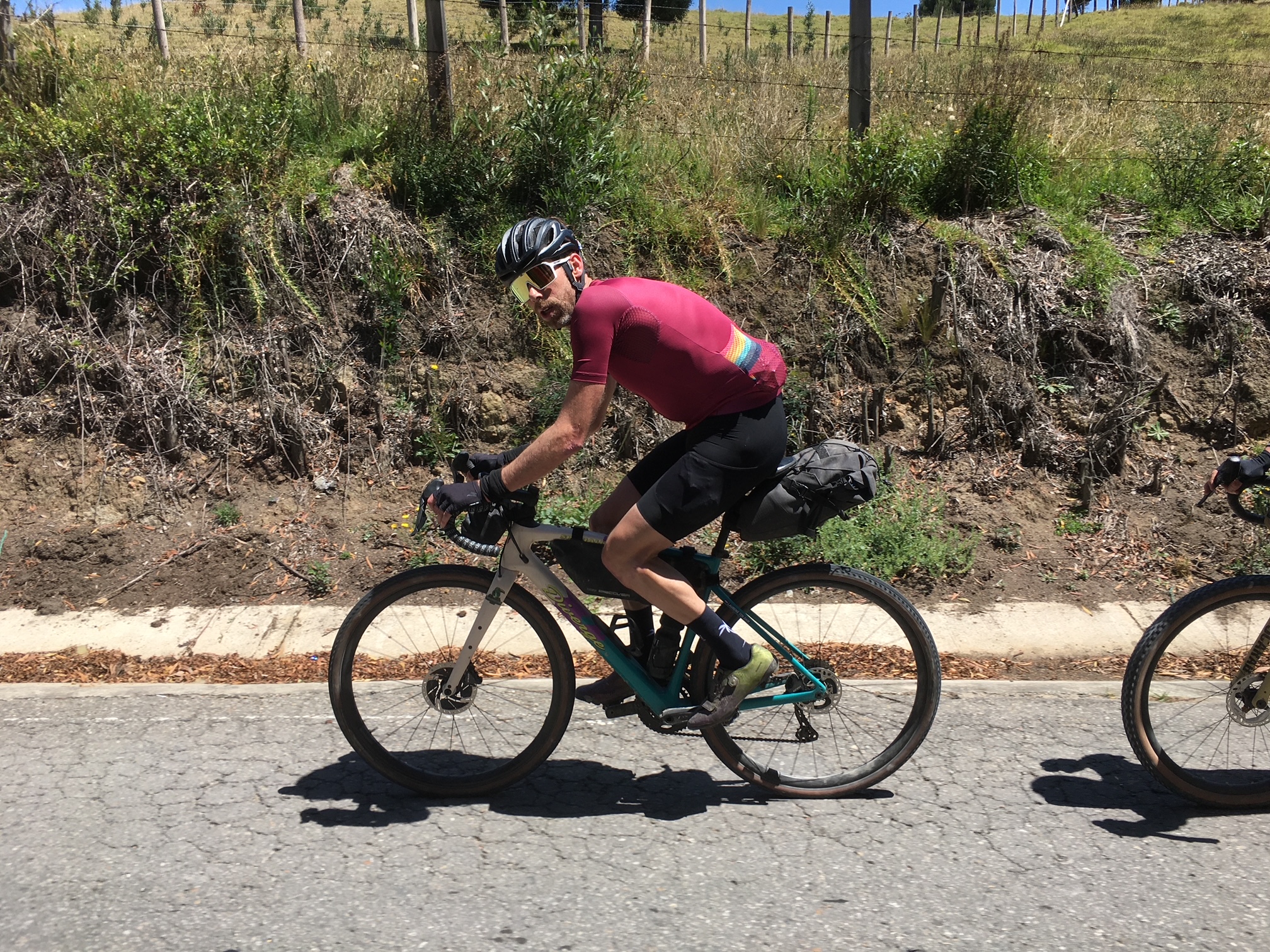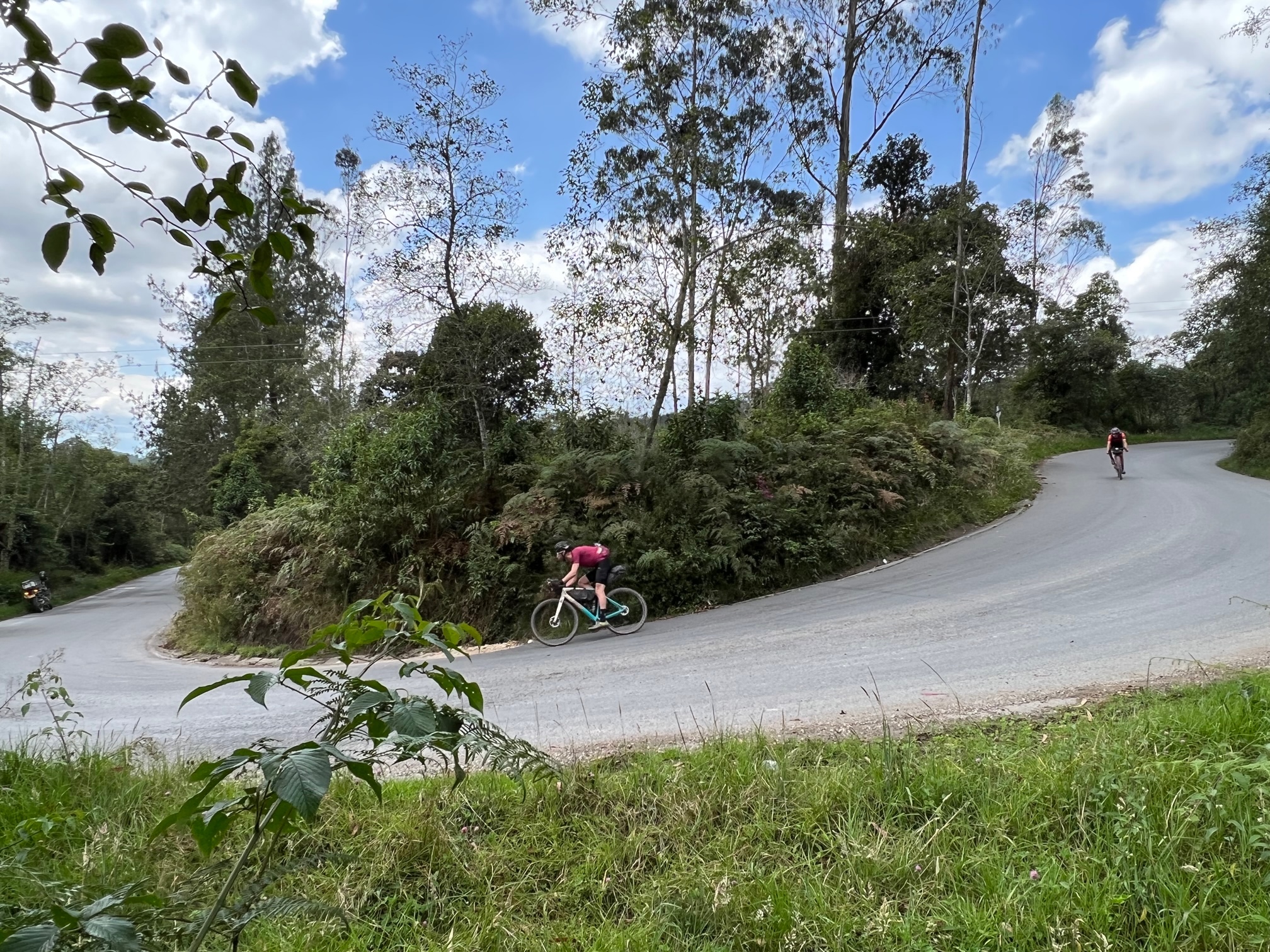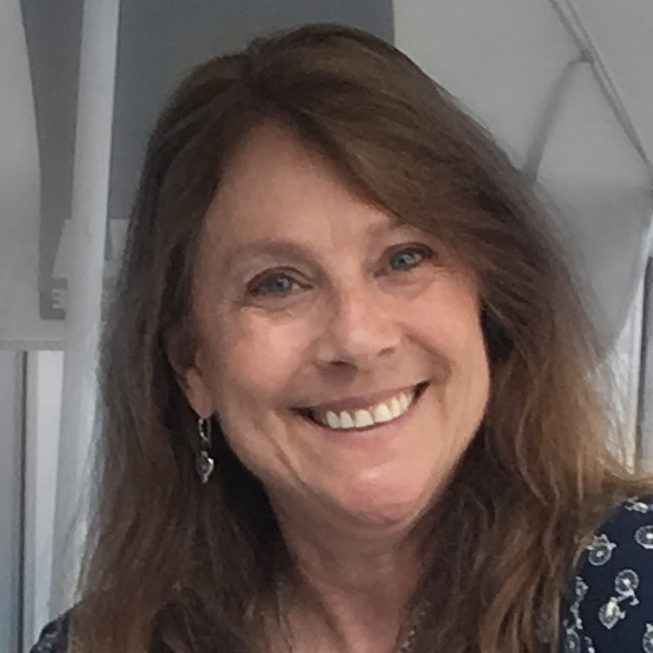Laurens ten Dam: It's old-school racing at Transcordilleras
Self-supported gravel adventure in Colombia covers 1,100km across eight days




“Crawling to the finish” and using a car wash to clean a bicycle, these are the new normals for Laurens ten Dam on the opening days of the Transcordilleras Rally in Colombia. The second edition of the South American gravel adventure follows the sun for eight consecutive days from east to west across the Andes Mountains.
Fewer than 50 riders were confirmed for the start on Sunday, February 20 to cover 1,100 kilometres and 25,000 metres of elevation gain by February 28, while less than a dozen competitors are attempting a non-stop bikepacking endurance option. Gravel gurus American Peter Stetina and Dutchman Ten Dam opted for the self-supported, fixed route with live tracking and overnight accommodation, and have found themselves riding early stages at the same pace. Among the field are 36 other riders, including former road pros Thomas Dekker of the Netherlands and Mauricio Ardila of Colombia.
Ten Dam referred to it as an “8 day glamping trip” rather than a true race, but the appeal is to survive, and survive faster than the other riders.
“I’ve never seen this before. We had like 100 kilometres on gravel and we did 5,000 metres of climbing. So if you do the math, it would be like 100k with 5 per cent climb,” Ten Dam told Cyclingnews, referring to stage 1 between Yopal to Monguí. “I think we also went down like 2,000 metres. It was up, down, up, down and some really steep parts. I had to walk my bike a few times; Pete [Stetina] did too. One time I crashed uphill because I couldn’t get out of my pedal fast enough. That was like suffering to the max.
“The first 70km, me and Pete were basically together. We missed a few turns, so the Colombians came back [to get us]. Then the two of us, the climb started from 2,000 metres altitude, which is like 6,000 feet, to 3,800 metres, to the angels. It was such a long climb. I was suffering. I was just crawling to the finish.”
Ten Dam has found success since turning his focus in the past two years from road racing with a big-budget team to grinding on gravel in the do-it-yourself privateer format. He had a victory at Gravel Locos in Texas and a second-place finish at Unbound Gravel 200. Competing in a mountain bike event “somewhere in the Netherlands” last September, he crashed and suffered a head contusion, he told Cyclingnews, so had been off the bicycle for a few months.
Transcordilleras was his excuse to return to action, and experience Colombia for the first time.
Get The Leadout Newsletter
The latest race content, interviews, features, reviews and expert buying guides, direct to your inbox!
“The first time I went to Colombia was three weeks ago,” he said. “The reason I went was that Tom Dumoulin, he is a friend of mine, invited me. He was at altitude here and I decided to join him for 10 days.”
Also with the Jumbo-Visma rider was Dutch teammate Koen Bouwman, training at altitude on the roads of Antioquia, on the western side of the western range of the Andes where Transcordilleras will conclude on February 28. It has become a magnet for other riders to enjoy elevation training away from a traditional European setting, including Dutchmen Jan-Willem van Schip (BEAT Cycling) and Jan Hirt (Intermarché-Wanty-Gobert Matériaux).
“And I was happy I could still follow them. I am happy with my condition right now,” added Ten Dam, who made friends with Mauricio Ordoñez, the founder and director of the Transcordilleras event.
“Then I went home for a week because I didn’t want to miss my wife and the kids for a full month. So I left all my stuff here [in Colombia] and came back after a week. The organiser took care of all my stuff, and that was really nice. He lives in Medellín where I was training so we were fishing together too and going to dinner. I got to know more about Colombia, otherwise you are totally unaware of what you can expect. But now I know that every 20km there is a shop or a place where you can buy water [for the race].”
First 3 stages
Stetina clocked the best time on stage 1, finishing the 102.2km route in 8 hours, 2 minutes, and Ten Dam followed in second, eight minutes later. The opening stage used 80 per cent gravel roads with 4,655 metres of climbing. The local knowledge has helped Ten Dam in the early stages in particular.
“The bike was filthy after two days, so I found a car wash. I am happy I have a clean bike now. I also broke a bottle cage, so I found a place and bought a bottle cage. Then I found the hotel and washed my clothes, so now I am chilling, you know, because 6:30 a.m. is the start again,” he said after a second day of riding.
“So at the car wash, no one spoke English. I could tell them I needed my bike washed [in basic Spanish]. And they were running to help. One guy wanted to clean and to dry and to make a special foam, but I told him I had to go. Everyone is so nice here in Colombia. I haven’t met a single grumpy person.
“[Stage 2] was really nice. We got a little bit of down time in the afternoon, those who finished early. The route was nice, gravel was less rocky and the climb was less brutal. Today we could really enjoy, but yesterday was just suffering.”
He said the incredibly tough opening stage on Sunday had riders rolling in after midnight. While he and Stetina completed that ride as a full eight-hour day of work, the majority of the field completed the stage in 10-12 hours and the final seven riders crossed the line after 17-19 hours.
For stage 2, Ten Dam was the official “winner” as the two finished together in 4 hours, 40 minutes after 116.6 kilometres, with 1,947 metres of climbing and 40 per cent additional terrain covered with descents.
“Basically, the front group of four guys [stage 2] stopped all together in the same shop. We each got like three bottles of water and a snack or something, so it’s really old-school racing, like the Tour de France in the old days. Remember the pictures of people raiding bars to get their fluids in? So we were basically doing the same.
“Me and Pete, we dropped the other two on the hardest climb, and then it was basically 40km downhill to the finish. We went down more today than up. So today was the stage with the high effort, I think 26km per hour. Pete and I were working pretty well.”
The duo continued to set the best times for the 152km stage 3 on Tuesday that included a climb over one of the higher peaks in the eastern Andes, the Páramo de Guargua. Stetina rolled in at 7 hours, 2 minutes with Ten Dam just three minutes back.
“The country is beautiful, the people are nice, we have had such great views and gravel. It’s a really, really good atmosphere,” the Dutchman said about the start to his 2022 season.
“It’s all good, but still we are facing six brutal stages. My back is already sore,” he laughed. “My little boy said to me ‘you wanted this yourself’, like no one forced you to do this, so no complaining and get back on the bike.”
Day five is considered the queen stage, 157.7km from Honda to the “mythical ascent” to the Cordillera Central at San Félix. The mostly uphill profile covers 5,386 metres of climbing. Progress of all the stages can be tracked online.

Jackie has been involved in professional sports for more than 30 years in news reporting, sports marketing and public relations. She founded Peloton Sports in 1998, a sports marketing and public relations agency, which managed projects for Tour de Georgia, Larry H. Miller Tour of Utah and USA Cycling. She also founded Bike Alpharetta Inc, a Georgia non-profit to promote safe cycling. She is proud to have worked in professional baseball for six years - from selling advertising to pulling the tarp for several minor league teams. She has climbed l'Alpe d'Huez three times (not fast). Her favorite road and gravel rides are around horse farms in north Georgia (USA) and around lavender fields in Provence (France), and some mtb rides in Park City, Utah (USA).